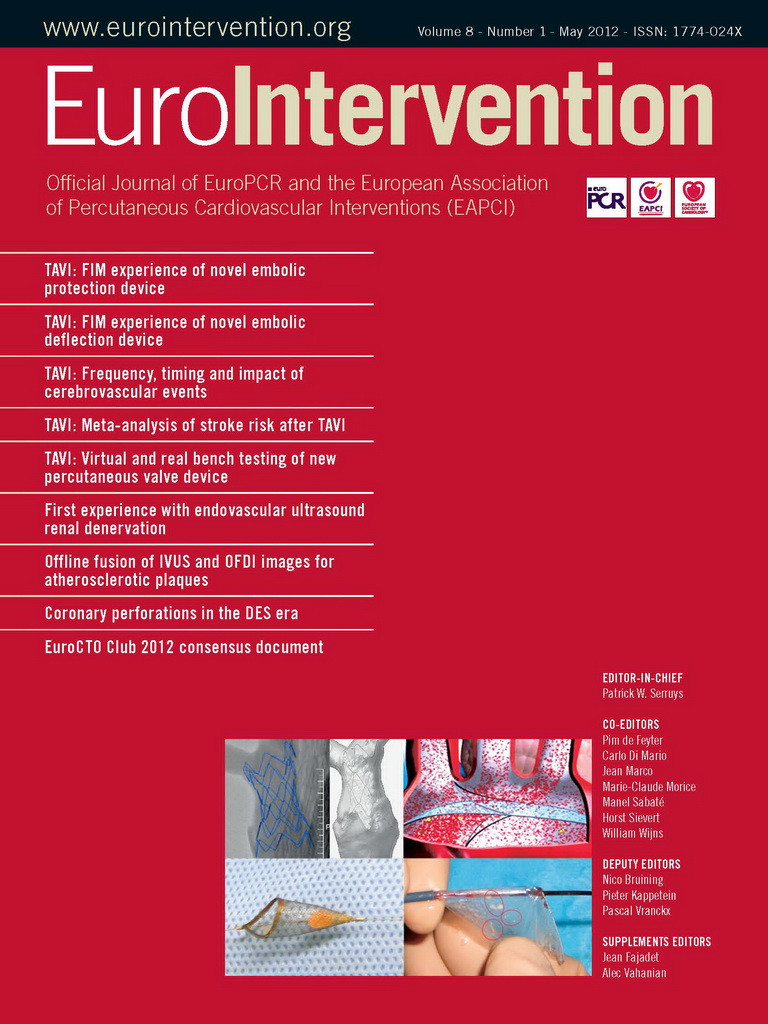It is almost three years now since we first announced the series “Tools and Techniques” for EuroIntervention, the official Journal of the European Association of Percutaneous Cardiovascular Interventions (EAPCI). The series was strongly focused on the transfer of knowledge from experienced experts in a field to the community. Through a simple but very effective step-by-step approach it has highlighted the technical issues and practical management of different techniques in interventional cardiovascular medicine. Overall, this series was also a clear consequence of the history and development of the EuroPCR course, from the early days in Toulouse, through the joining forces with the Rotterdam interventional course until it became the official course of EAPCI, now cooperating closely with the national European working groups. PCR, and nowadays the entire PCR family, followed and consequently follow the aim of providing not only information, but also education to the interventional cardiovascular community.
Inspired by this dedication to education and motivated by comments from our clinical and research fellows we developed the idea and conception of this series which tried to utilise the fantastic possibilities of the online world: as you all know, the 22 brief articles which were printed in each issue (Table 1) were only appetisers for the in-depth and detailed on-line chapters with lots of additional media and material (www.pcronline.com/eurointervention). In all of these chapters (mostly) European experts covered the complete list of do’s and don’ts of cardiovascular interventions. The series has become very popular and was very well received by the community. We, as the responsible series editors, and the authors, received numerous comments from you and were very happy about your active and positive response: some of the chapters were visited more than 3,000 times and were downloaded up to 1,600 times from the EuroIntervention website.

However, after all this time and with all this positive experience we feel we have to say good-bye. Why? Because there is something better to come. Something, which develops the ideas of this series further and brings them to another level: the EAPCI-EuroPCR Textbook.
The EAPCI-EuroPCR Textbook is similar to the “Tools and Techniques” series: a joint effort by many prominent members of the community. It is a true reference in interventional cardiovascular medicine with four volumes covering everything from A to Z within 92 chapters, written by 262 experts in the field. We are sure you will find them extremely valuable and you will use them as a reference for your daily practice, to study and to discuss, and, they will even look impressive on your shelf.
However, in these days of digital communication and Web 2.0, it would be a pity if the Textbook remained simply a textbook. Thus, the editors have decided to have, as an extension to the print edition, a digital edition of the book, which will be enriched with additional material illustrating and expanding the information to be found in the chapters.
This alone is something which has been done previously and would seem simply logical and contemporary. However, this online edition goes far beyond that: it gives access to the tremendous archives of EAPCI and PCR and links recorded cases, live cases, slides, and manuscripts with the related topics from the textbook. Thus, it opens our collective memory, uses previous experiences and thoughts, links theory to practice, and converts general recommendations for patient treatment to experiences with the treatment of a particular patient.
Parallel to “Tools and Techniques”, and completely in line with the philosophy of PCR: “Innovation in Education at Work“, this fits physiologically with our way of working and thinking as physicians involved in interventional cardiovascular medicine. We have all been trained, and are able and used to implementing and transforming visual information rapidly into our daily practice. More importantly, we are also used to extrapolate from general rules to specific individual treatment needs. This is what differentiates the mere expert from the dedicated physician, and this is, to a great extent, what differentiates this textbook from other textbooks.
Moreover, the digital edition is not static, it is organic. It will grow and develop with the community. It can and will change its shape, reacting to the needs arising from new evidence and experience. In summary: while the print edition is the tangible body, the digital edition is the soul, and will keep the Textbook lively and current.
Those of you attending PCR 2012 will be given exclusive access to the digital version of the book, for all the others, we can only recommend that you give it a try – if you liked “Tools and Techniques”, you will definitely not be disappointed. We are sure that these fantastic resources will be a valuable addition to your daily practice. In addition, the online resources allow for your active participation in this project!
Finally, we have only one more thing to do: we have to thank all of you for your active participation in this project and your suggestions for improvements and for additional topics. We thank our authors for their great efforts and their excellent cooperation and last, but definitively not least, we thank the brave editorial team Sylvie Lhoste, Véronique Deltort, Paul Cummins and Frédéric Doncieux for their fabulous support and their extraordinary dedication!
Good-bye for now! We wish you a fantastic time with the EAPCI/PCR Textbook!

